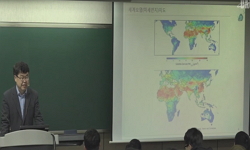Donghae Port functions as a logistics hub for bulk cargo, such as cement and coal, within the Gangwon region and has the potential to expand its logistics connections with Northeast Asia based on this industrial foundation. However, the port’s opera...
http://chineseinput.net/에서 pinyin(병음)방식으로 중국어를 변환할 수 있습니다.
변환된 중국어를 복사하여 사용하시면 됩니다.
- 中文 을 입력하시려면 zhongwen을 입력하시고 space를누르시면됩니다.
- 北京 을 입력하시려면 beijing을 입력하시고 space를 누르시면 됩니다.

동해항 대기오염 물질 확산 패턴 및 저감 방안 = Air Pollutant Diffusion Pattern Analysis and Mitigation Measures in DongHea Port
한글로보기https://www.riss.kr/link?id=A109454997
- 저자
- 발행기관
- 학술지명
- 권호사항
-
발행연도
2024
-
작성언어
Korean
-
주제어
동해항 ; 대기오염 ; 확산 패턴 ; 저감 방안 ; 지속 가능한 성장 ; Donghae Port ; Air pollution ; Dispersion patterns ; Mitigation measures ; Sustainable growth
-
등재정보
KCI등재
-
자료형태
학술저널
-
수록면
759-780(22쪽)
- DOI식별코드
- 제공처
-
0
상세조회 -
0
다운로드
부가정보
다국어 초록 (Multilingual Abstract)
Donghae Port functions as a logistics hub for bulk cargo, such as cement and coal, within the Gangwon region and has the potential to expand its logistics connections with Northeast Asia based on this industrial foundation. However, the port’s operations have led to significant air pollution issues, impacting local residents' health and the surrounding environment. This study aims to conduct an in-depth analysis of the dispersion patterns of major air pollutants generated at Donghae Port and to propose effective mitigation measures. Analysis reveals that fine particulate matter (PM10, PM2.5), ozone (O3), and nitrogen dioxide (NO2) are primary pollutants, with distinct dispersion patterns influenced by weather conditions and geographic features. Based on these findings, this study suggests mitigation strategies such as regular water spraying, installation of dust towers, and real-time monitoring systems, providing insights into sustainable growth for Donghae Port and a policy framework to protect public health.
국문 초록 (Abstract)
동해항은 강원 지역 내 시멘트, 석탄과 같은 벌크 화물의 물류 거점으로써의 역할을 하고있으며, 이러한 산업적 기반을 바탕으로 동북아 지역과의 물류 연계를 확대할 가능성을 가지고 있다...
동해항은 강원 지역 내 시멘트, 석탄과 같은 벌크 화물의 물류 거점으로써의 역할을 하고있으며, 이러한 산업적 기반을 바탕으로 동북아 지역과의 물류 연계를 확대할 가능성을 가지고 있다. 반면 항만 운영에 따른 대기오염 문제로 인해 지역 주민의 건강과환경에 심각한 영향을 미치고 있는 실정이다. 따라서 본 연구는 동해항에서 발생하는 주요 대기오염 물질의 확산 양상을 심층적으로 분석하고, 효과적인 저감 방안을 도출하는 것을 목적으로 한다. 분석 결과, 미세먼지(PM10, PM2.5), 오존(O3), 이산화질소(NO2) 등이 주요 오염원으로 확인되었으며, 기상 조건과 지형적 특성에 따라 특정 방향으로 확산되는 경향이 뚜렷하게 나타난다. 이러한 결과를 바탕으로, 정기적인 물 분사, 분진 타워 설치, 실시간 모니터링 시스템 구축 등의 저감방안을 제안하며, 동해항의 지속 가능한 성장과 지역 주민의 건강보호를 위한 선순환적 정책 메커니즘 설계에 기여할 수 있는 시사점을 제공한다.
동일학술지(권/호) 다른 논문
-
랜덤 포레스트를 이용한 상하이발 해운 및 항공 운임 지수 간 영향 분석
- 한국해운물류학회
- 전준우
- 2024
- KCI등재
-
- 한국해운물류학회
- 박두진
- 2024
- KCI등재
-
- 한국해운물류학회
- 김한나
- 2024
- KCI등재
-
항만공사 ESG 경영의 사회적 가치에 관한 연구: 여수광양항만공사의 사례를 중심으로
- 한국해운물류학회
- 정찬민
- 2024
- KCI등재




 KCI
KCI KISS
KISS






